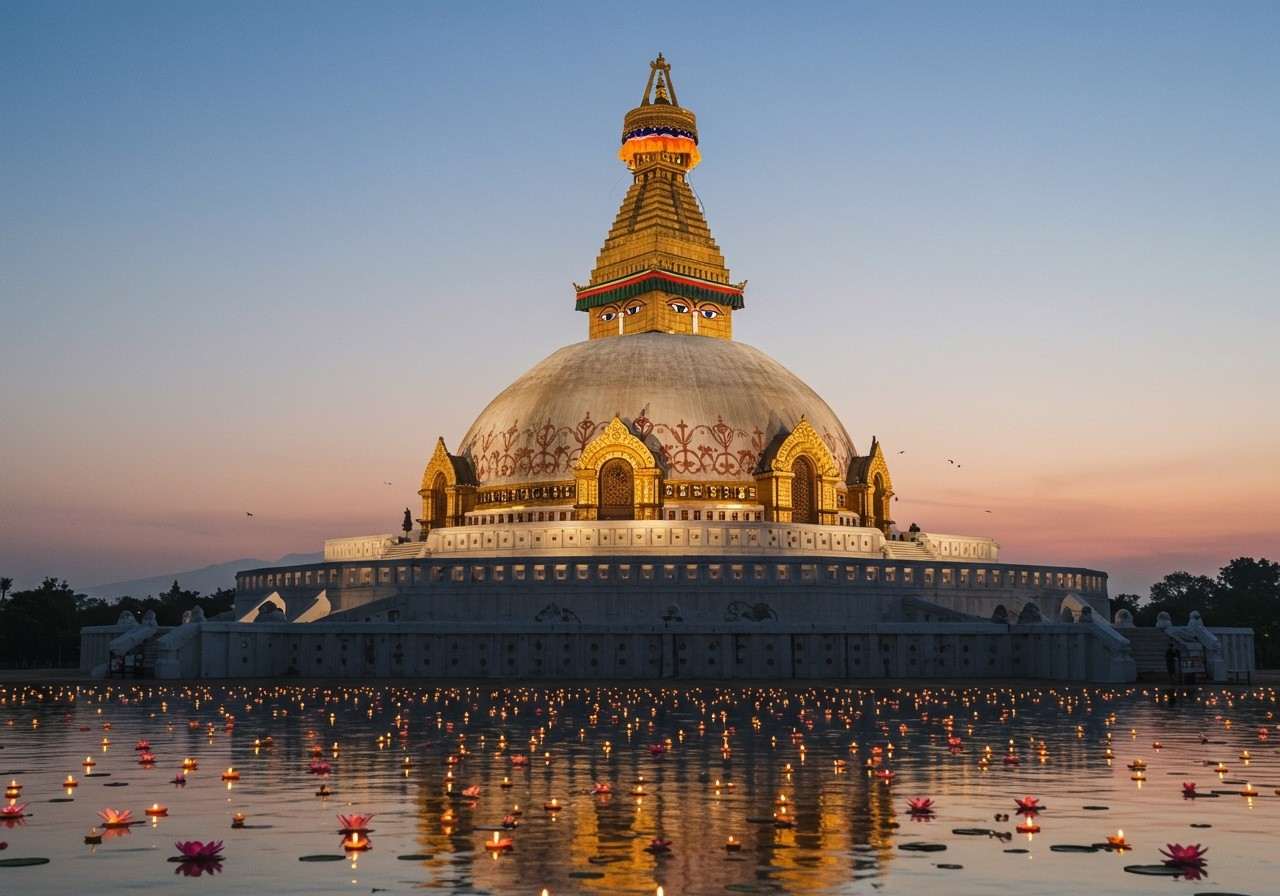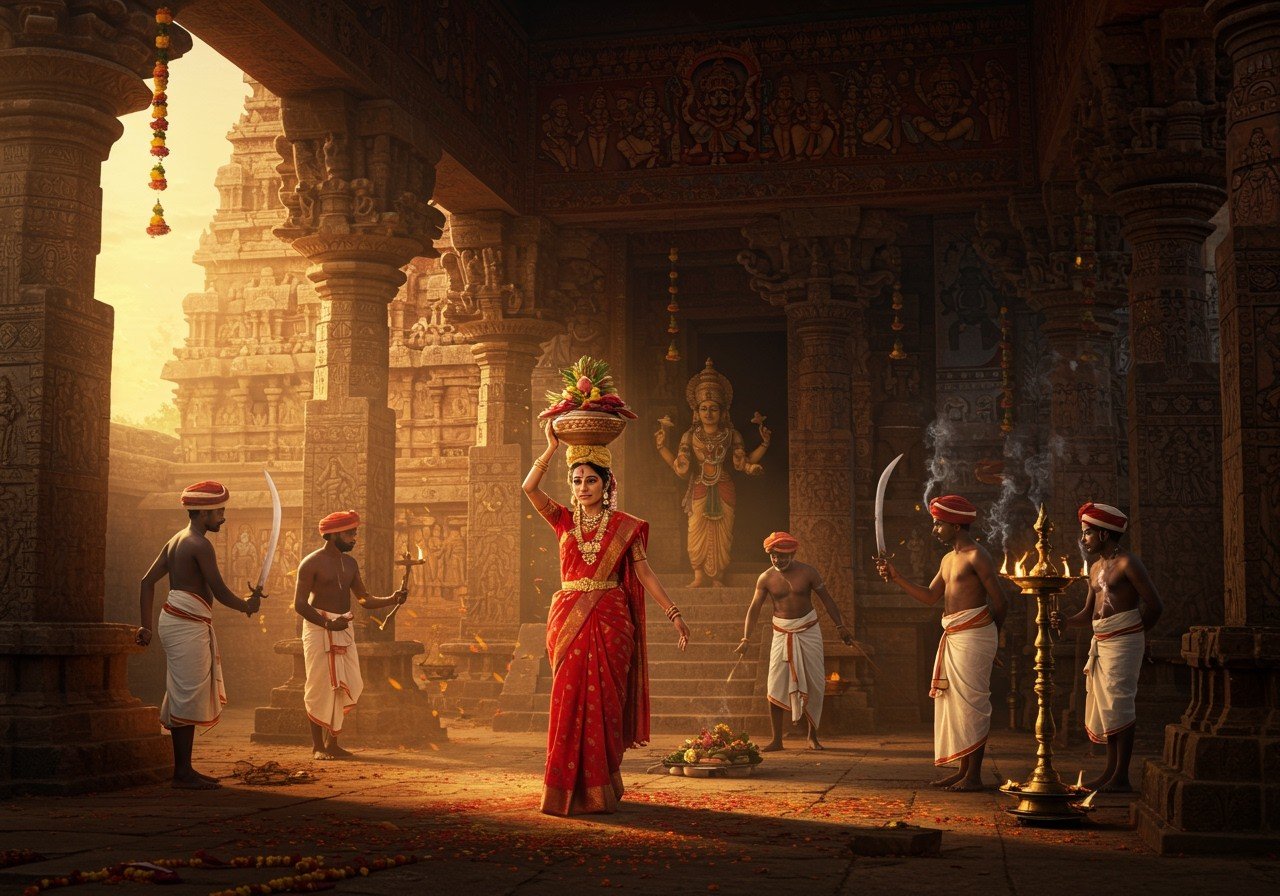
In the pages of our grand history, some places are not just locations; they are emotions, they are living stories. The Dharmarajika Stupa, also known as the Great Stupa of Taxila, is one such sacred echo from our past. It’s more than just an ancient structure; it’s a testament to an emperor’s profound transformation and the timeless wisdom of Lord Buddha. Come, let’s take a heartfelt journey to understand this beacon of peace and heritage that continues to inspire seekers even today.

The Vision of an Emperor: The Story Behind the Stupa
The story of the Dharmarajika Stupa begins with one of the greatest figures in our history, Emperor Ashoka. Built around the 3rd century BCE, this stupa is not just brick and mortar; it’s a symbol of Ashoka’s change of heart. After witnessing the immense suffering in the Kalinga war, he embraced Buddhism and dedicated his life to spreading the message of Dharma. He became known as ‘Dharma Raja’ or the ‘Righteous King’.
This magnificent stupa was built to enshrine the sacred relics of the Buddha, who is considered the true ‘Dharma Raja’ or the ‘Lord of Law’. Thus, the name itself connects the righteous king with the supreme teacher, creating a powerful spiritual legacy.
An Architectural Marvel: Where Art and Devotion Meet
The design of the Dharmarajika Stupa is a beautiful reflection of early Buddhist traditions and served as a model for many later structures. Imagine a massive, serene dome reaching for the heavens, surrounded by a sacred path for pradakshina (circumambulation), where countless devotees have walked, chanting and praying.
- A Confluence of Cultures: One of the most fascinating aspects is the beautiful blend of Indian and Greco-Bactrian art styles, a signature of the Gandharan region. The pillars and decorations show a remarkable fusion of cultures, reminding us of the open and inclusive nature of our heritage.
- Symbolism in Stone: Every part of the stupa, from its base to the crowning elements, is rich with symbolism, guiding a devotee’s mind towards the path of enlightenment. It’s a physical representation of the spiritual journey.
A Hub of Culture and Spirituality
For centuries, the Dharmarajika Stupa was a vibrant centre of faith and learning. It wasn’t just a silent monument; it was a spiritual magnet that attracted pilgrims, monks, and scholars from far and wide. This sacred complex helped in the gentle spread of Buddhist teachings and Indian culture across Asia. It was a place where faith was practiced, knowledge was shared, and art flourished, making it a cornerstone of our spiritual and culturally significant heritage.
The serenity of such sacred places inspires us to bring purity into our own spiritual practices. A simple, clean cloth, for instance, holds deep significance in our rituals, symbolising a pure heart and focused mind. At Poojn.in, we understand this sentiment deeply.
Bring Sanctity to Your Sacred Space
Enhance your daily puja and spiritual practices with authentic items that resonate with purity and tradition. For rituals that require a clean and sacred fabric, explore our collection of high-quality pooja essentials.
To find all the necessary items for your spiritual needs, visit our Pooja Samagri collection at poojn.in.
Answering Your Curiosities about the Stupa
Many people have questions about this ancient marvel. Let’s explore some of them.
One common query is about its location. The Dharmarajika Stupa is situated near Taxila in Pakistan, a region that was once a thriving centre of the Gandhara civilization and is now a UNESCO World Heritage Site. Its location is a reminder of our shared cultural history that transcends modern borders.
People also wonder about what awaits them there. A visit to the Dharmarajika complex is like stepping back in time. You can see the main stupa, the ruins of surrounding monasteries, and smaller chapels. Excavations here, led by Sir John Marshall in 1913, have unearthed precious relics, coins, and statues that give us a priceless glimpse into the lives of the people who worshipped here centuries ago.
Today, this sacred site stands as a testament to faith, history, and the timeless wisdom of Buddhism. It continues to be a place of pilgrimage and a source of inspiration for those seeking peace and a connection to our rich past.
Its Enduring Message of Peace for Today’s World
In our fast-paced, modern lives, the Dharmarajika Stupa offers a quiet reminder of the enduring values of peace, compassion, and non-violence. It is a symbol of how a commitment to righteousness can create something beautiful and lasting. This ancient stupa is not just a relic of the past; it is a living lesson for our present and a beacon of hope for our future.
By learning about and preserving such magnificent heritage sites, we honour our ancestors and keep their wisdom alive for generations to come. It’s a sacred duty we all share.


